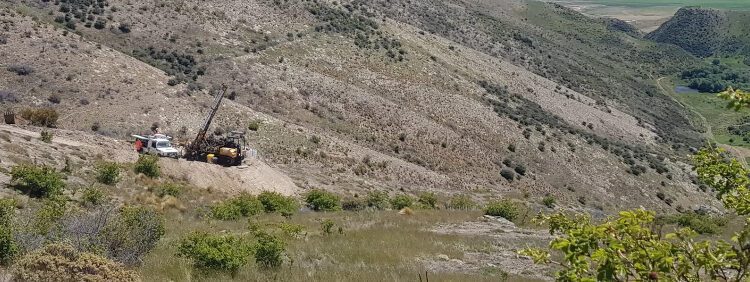Santana Minerals Limited (ASX: SMI) has received further significant assay results from the 100% owned Bendigo-Ophir Project in New Zealand.
Drilling since November 2020 has increased Inferred Gold Resources (MRE) to 643Koz at four Rise and Shine Shear Zone (RSSZ) Deposits.
Thickened (>40 metres) upper hanging wall shear (HWS) mineralisation in diamond drill (DD) holes (MDD020 and MDD021R) and VG hosted in brecciated quartz veins in current drillhole MDD025 show the RAS system remains robust at least 400 metres north-east of the newly defined 2021 MRE with scope for further extensions as the drilling moves north
“Our drilling at RAS now indicates that the shear and stockwork related Au mineralised body extends greater than one kilometre down plunge from the surface, about 400m beyond the limit of the Northern boundary of our last Mineral Resource Estimate (MRE), completed last year,” Executive Director Dick Keevers said.
“On our most northern drill section N5017720, drill hole MDD 19R assayed 42.6m @2.3 g/t Au, and drill hole MDD 25, 80m to the east, is in progress with only the top of the Au mineralisation cored to date, where visible free Au (VG) has been logged.
“So far, we have maintained a bold 120 m x 80 m drill pattern, within which the E -W width of the body is about 270 m, subject to closer future definition of the edges.
“These excellent drilling results, combined with the good gold recovery options indicated by our preliminary metallurgical tests last year, have established a base for Santana to push on with more drilling, so that in the first half of 2022, we can up-grade our Interim MRE, as well as conduct more metallurgical test work, which is expected to then lead to preliminary mining studies.”
RAS Deposit
Extension drilling beyond existing 2021 MRE Resource drilling on nominal 120 metre by 80 metre centres has extended RAS shoot mineralisation north at least 400 metres down-plunge beyond the 2021 MRE.
. MDD012 and MDD017 appear to close off mineralisation to the west but mineralisation remains open to the north and east.
Mineralisation within the RAS shoot typically occurs over a vertical interval of 40-80 metres with concentration of gold in the 10-20-metre-thick HWS with grades of 1-5 g/t gold. Mineralisation is also in high-grade stockwork zones below the HWS as in the 13 metres at an average grade of 12.6 g/t Au intersected in MDD016.
The RAS shoot has now been defined over 1000 metres down plunge from outcrop. The current drill programme is designed to test mineralisation a further 300 metres northwards as well as define the eastern margin.
DD Drilling at RAS, accelerated from early October 2021 with 24/7 drilling, has been further accelerated with the addition of another DD rig on 10th January. A total of 4,145 metres have been completed (16 holes) beyond those included in the September 2021 RAS MRE.
New RAS Drill Results – MDD019R, MDD020 & MDD021R
DD holes MDD019R, MDD020 and MDD021R are collared on three east-west drill sections (N5017360, N5017480 & N5017720) north of the RAS 2021 MRE. At the north-eastern end of the RAS 2021 MRE, four interpreted stacked zones of mineralisation, thicker than had been projected in the MRE, were intersected in drillhole MDD019R
• MDD019R: o Aggregate 25.6 metres @ 1.29 g/t of gold between 187.0 metres and 259 metres including: 6.0 metres @ 0.49 g/t gold from 187 metres 9.0 metres @ 0.42 g/t gold from 213 m, 6.7 m @ 1.42 g/t gold from 228 m, and 4.0 metres @ 4.20 g/t gold from 253 m
This MDD019R gold mineralisation is less developed than that in drillholes MDD013 and MDD014 to the west, however the intercepts show the RAS shoot width at this northing (N5017360) to be 270 metres across and remains open to the east. Previously, MDD012 effectively closed mineralisation off to the west.
For further information please visit: https://santanaminerals.com/












